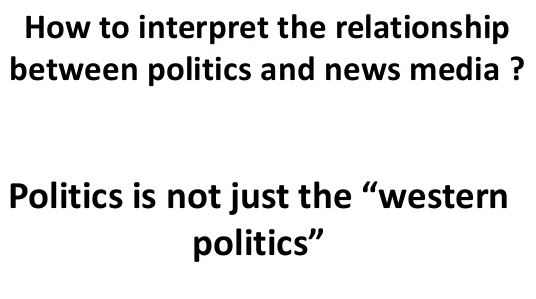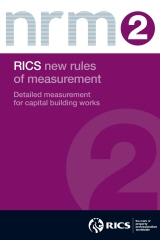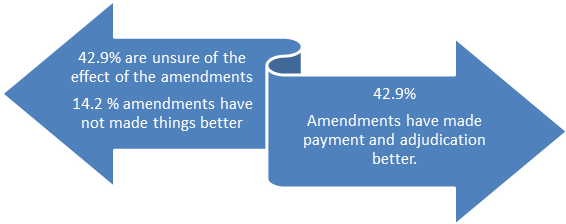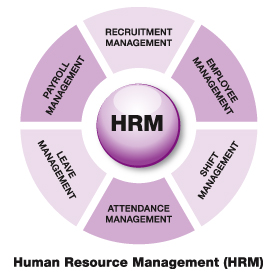Similarities and Differences between the Media Systems of India and China
Media Systems – China and India are the two most populated countries in the world with over 30% of the entire world’s population. Both countries are currently undergoing massive transformations due to the implementation of liberal economic policies (O’Connor, 2007). The GDP growth rate in 2007 rose by 8.5% in India and 11.4% in China (CIA, 2008). “Nicholas D. Kristof, Beijing bureau chief (1988–93) of The New York Times, predicted in 1993 that ‘the rise of China, if it continues, may be the most important trend in the world for the next century’. Only five years into the new millennium, China has become the fourth largest economy in the world. Many believe China will eventually overtake the US around the mid-21st century” (Kristof, 1993, p. 59 cited in Cao, 2007, p. 431). India is projected by McKinsey “to become the world’s fifth-biggest consuming nation by 2025” (O’Connor, 2007). Both countries also have very long historical and cultural traditions that span thousands of years but the actual nation-states of both countries are quite young (Pashupati, K. et al, 2003).
The media landscapes of both countries are not immune to the effects of commercialization. There has been a shift away from state-run media towards private ownership. This process is currently more prevalent in India than in China because not all of India’s media is state-run. Another trend is the use of advertising by state-run monopolistic media. According to India-based researcher A. Joseph, “Media systems and structures have undergone dramatic transformations at both the global and the national level since the mid-1980’s” (Joseph, 2006, p. 18). The countries are also affected by technological changes including the shift to cable and satellite television broadcasting and the growth of the internet. British Media Researcher Margaret Gallagher wrote, “In Asia the media in many countries have recently seen a spectacular transformation with the arrival of new commercial cable and satellite channels, and the privatization of old state-run media has led to new market-oriented content” (Gallagher, 2000, quoted in Joseph, 2006).
This essay will outline and discuss the similarities and differences in the media systems of China and India. The first section will focus on the basic demographics of the countries and how they impact the media system. The research will then shift to the state’s control of the media. Then, the media’s role in the two countries will be compared. The next section will discuss the impact of modernization theory and globalization and the final section will be the conclusion.
Media Systems Demographics
First of all, it is important to consider the demographics of the countries in order to make a reasonable comparison between the two. China and India are the only two countries which have a population greater than a billion people. According to a July 2008 estimate by the CIA World Fact Book, India’s population will reach 1,147,995,898 and China’s population will reach 1,330,044,605 (CIA, 2008). India is made of 28 states and 7 union territories and China is made of 23 provinces, 5 autonomous regions and 4 municipalities (CIA, 2008).
The government style is very important because the political economy of the country directly impacts the media system. India’s formal name is the Republic of India and it is a federal republic (CIA, 2008). The country became independent from British control in 1947 (Pashupati, K. et al, 2003). China is a Communist State and the formal name is the People’s Republic of China (CIA, 2008). The Chinese republic was founded in 1949 (Pashupati, K. et al, 2003).
Both countries have the difficult task of integrating diverse populations into one united nation-state. An example is the amount of languages spoken in both countries. Hindi and English are the two most popular languages in India. There are 15 other languages recognized in the constitution and also hundreds of different dialects (Pashupati, K. et al, 2003). According to the CIA World Factbook:
“English enjoys associate status but is the most important language for national, political, and commercial communication; Hindi is the national language and primary tongue of 30% of the people; there are 21 other official languages: Assamese, Bengali, Bodo, Dogri, Gujarati, Kannada, Kashmiri, Konkani, Maithili, Malayalam, Manipuri, Marathi, Nepali, Oriya, Punjabi, Sanscrit, Santhali, Sindhi, Tamil, Telugu, and Urdu; Hindustani is a popular variant of Hindi/Urdu spoken widely throughout northern India but is not an official language” (CIA, 2008).

In China, the major languages include “Standard Chinese or Mandarin (Putonghua, based on the Beijing dialect), Yue (Cantonese), Wu (Shanghainese), Minbei (Fuzhou), Minnan (Hokkien-Taiwanese), Xiang, Gan, Hakka dialects, minority languages (see Ethnic groups entry)” (CIA, 2008).
The State’s Control of Media Systems
Because China and India have two different government styles, their approach to media regulation is not the same. India has a ‘mixed economy’ which means that it is a mixture of public (state-run) and private ownership of media. Telecommunication and broadcasting is state-owned and the print media and film industry are private (Pashupati, et al, 2003). “The prerogative of investing in certain ‘core industries’, including telecommunication and broadcasting, was reserved exclusively for the state sector. On the other hand, ownership of the print media, as well as the film industry, remained largely in private hands, and the press in India has enjoyed considerable freedom from state control throughout the history of the republic” (Pashupati, et al, 2003, p. 256).
Because the Chinese government is Communist, all of the media is controlled by the state. The Chinese Communist Party controls all 358 television channels and over 2,000 newspapers (Esarey, 2006). The largest television network in mainland China is called CCTV which stands for Chinese Central Television and is a government agency controlled by the Chinese Communist Party (About CCTV International, 2005).
The Chinese press has developed into a distinctive pattern of a two-tier system after two decades of reform: the propaganda focused Party press and the market-oriented press as the commercial arm of the Party press. The former consists of the ‘traditional’ morning dailies run by the CCP propaganda departments, serving principally as the authoritative voice of the Party-state. The latter are largely reader-centered, fully commercialized newspapers controlled and sponsored by their parent Party organ press (Cao, 2007, p. 442).
The Central Propaganda Department of the Communist Party is in charge of keeping an eye on members of the media workforce and restricting the content of television, radio, newspapers, magazines, and film (Esarey, 2006). The most widely read newspaper in China is the People’s Daily which is “a key vehicle through which major government policies and Party ideological guidelines are promulgated” (Cao, 2007, p. 432).
The advertising industry has had an impact on both countries and originally initially both countries did not allow advertising at all. This changed in the late 1970’s-mid 1980’s. India’s Doordarshan network allowed soap operas which were sponsored by companies like Nestle and Colgate (Singhal and Rogers, 1989). The soap operas were a huge success and were very profitable and it became very common for the networks to accept advertising.
Although the media is technically owned by the state in China, the government has become much more relaxed about allowing commercial advertising. In the past, the communist party funded all of the media. China’s CCTV began allowing paid advertising in 1979 and now almost all state media does not receive government subsidies and relies on commercial advertising for funding. Now, the funding comes from advertising and indirect ownership by private and collective businesses.
Media’s Function in Society
Both India and China are similar because the media serves a specific function in society which was originally set out by the governments of both countries. Because the Chinese Communist Party controls the media personnel and the content of the media, it is used as propaganda for the party and as a form of political communication (Esarey, 2006). “As an authoritarian society, China is characterized by a largely linear pattern of political communication.
The political elite rules on the one hand with a centralized administrative machine with all its associated penal power; and on the other, a pervasive discursive campaign of propaganda to condition the public for uniform thinking” (Cao, 2007, p. 433). This is very clear in the four main tasks of the Chinese Television Industry:
- To have a positive function for society by publicizing and explaining the policies of the Party and the government;
- To offer a set of socio-moral standards based on Marxism-Leninism and Maoism and to encourage and educate the people of the entire nation to strive to create a socialist civilization that is both materially and culturally rich;
- To help the Party and the government in the smooth running of the country and maintaining established social order and stability; and
- To follow the Party’s and the government’s guidelines, and to prevent anti-Party and anti-government coverage” (Peng, 1987 quoted in Pashupati, K. et al, 2003, p. 258).
Also, the Chinese Communist Party closely monitors all internet usage by Chinese citizens and “access to politically threatening Internet sites and web logs is blocked; uncensored satellite television is not legally available to the general public; foreign radio broadcasts are scrambled; and the sale of publications” (Esarey, 2006, p. 2). The media in India does not seem to serve the same function at all. Instead, it is used to achieve the goal of improving the nation and educating and entertaining Indian citizens. According to the Doordarshan’s Citizen Charter, the India public service network agrees to do the following;
- Inform freely, truthfully and objectively the citizens of India on all matters of public interest, national and international.
- Promote social justice, national consciousness, national integration, communal harmony, and the upliftment of women.
- Provide adequate coverage to sports and games.
- Cater to the special needs of the youth.
- Pay special attention to the fields of education, and spread of literacy, agriculture, rural development, environment, health and family welfare and science and technology. (Doordarshan, 2006)
Modernization and Globalization
The belief that the media can be used to educate citizens in order to improve a nation is embedded in Modernization Theory. Basically, Modernization theory believes that a country must become ‘modernized’ in order to achieve economic growth (Melkote, 1991). “Critics have argued that there is a pro-western bias inherent in the assumptions of this theory, because the notion of what is ‘modern’, and therefore ‘good’, is dictated primarily by western nations and values” (Pashupati, K. et al, 2003, p. 253). Globalization is very closely linked with modernization and is generally associated with “an acceleration of the spread of ‘Western-style’ modernization” (Thomas, 2005, p. 54).
The theory ignores centuries of historical change and is used to describe the situations of massive economic growth in India and China while overlooking the fact that both countries were once massive, wealthy empires. Signs and symptoms of globalization process are very much in evidence within the Indian media context today: early stages of media concentration (including cross-media ownership), growing ascendancy of the profit motive, dilution of the public service role of the media, abuse of market power, translation of economic power into political power, promotion of certain ideologies and values (and devaluation of others), supremacy of ‘mainstream’ content, increase in formulaic content, neglect of the interests and concerns of individuals, communities and groups who do not figure in the priorities of the market, absence of ‘minority’ voices and views from public debates and discussions, decline in public discourse in terms of both seriousness and plurality, spread of a ‘culture of entertainment’, and so on. Commercial interests have apparently become the driving force of much of the country’s media, both public and private” (Joseph, 2006, p. 19).
Media critics McQuail and Siune believe that when the number of television channels increase that the channels become less public-service oriented and more concerned with profits because they are owned by large privately owned media conglomerates. Siune wrote “Public service monopolies, with national obligations, have disappeared, and the content has increasingly become internationalized and commercialized” (1998, p. 4-5).
Conclusion
India and China are very highly populated countries which both share the interesting combination of having long historical traditions and being young nation-states at the same time. Also, both countries are undergoing massive transformations due to implementations of liberal economic policies. India and China’s citizens all speak a variety of languages which can make it difficult to reach everyone in the nation.
Both countries use their media systems in order to have a direct social impact on its citizens although they have different goals. China’s Communist government directly controls all of the media and also uses it to spread propaganda. India is a federal republic and has a mixed system whereby telecommunication and broadcasting is state owned and the print media and film industry are privately owned.
India’s media seems to serve the function of improving the nation, and educating and entertaining its citizens. The television broadcasting systems in both countries were previously all state-controlled and no commercial advertising was allowed but now they have relaxed their rules and allow commercial advertising.
References
About CCTV International. (2005)
CIA. (2008, May 01). The World Factbook
Cao, Q. (2007). Confucian Vision of a New World Order?: Culturalist Discourse, Foreign Policy and the Press in Contemporary China. The International Communication Gazette, 69 (5), 431–450.
Doordarshan. (2006). Citizen Charter
Esarey, F. (2006, February). Speak No Evil: Mass Media Control in Contemporary China.
Joseph, A., & Sharma, K. (2006). Whose News? The Media and Women’s Issues. New Delhi: SAGE.
McQuail, D. & Siune, K. (1998). Media Policy: Convergence, Concentration and Commerce. London: SAGE Publications.
Melkote, S. (1991) Media Systems and Communication for Development in the Third World: Theory and Practice.London: Sage.
O’Connor, A. (2007, December 01). Sharp-Eyed L’Oréal Gets Head Start in India. Media Systems – The Sunday Times.
Pashupati, K., Sun, H. L., and McDowell, S. D. (2003). Guardians of Culture, Development Communicators, or State Capitalists? Media Systems A comparative analysis of Indian and Chinese policy responses to Broadcast, Cable, and Satellite Television. Gazette: The International Journal for Communication Studies , 65 (3), 251-271.
Singhal, A. and E.M. Rogers (1989) India’s Information Revolution. Media Systems New Delhi: Sage.
Thomas, A. O. (2005). Media Systems, Imagi-nations and borderless television: Media, Culture and Politics Across Asia. London: SAGE.




